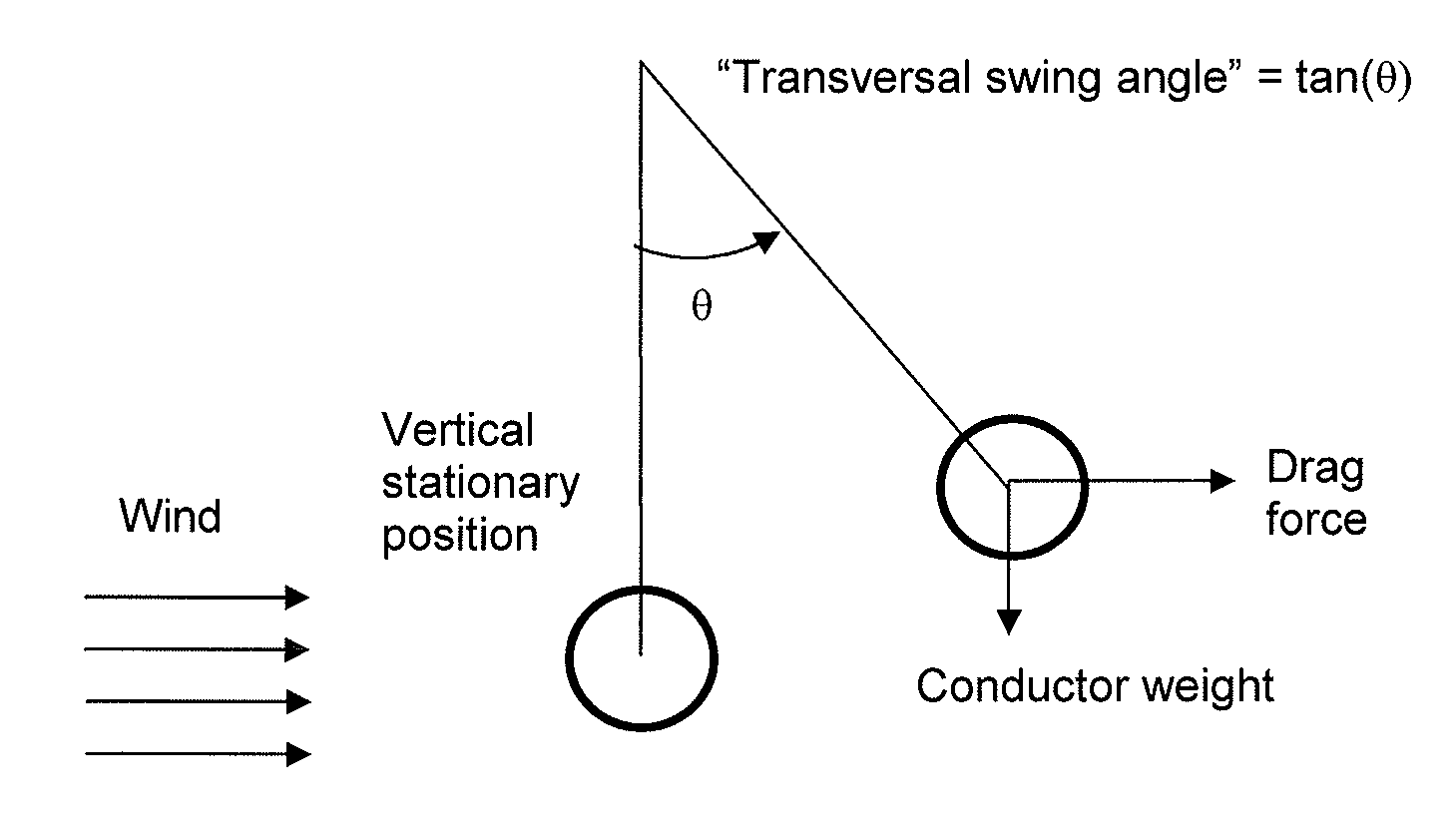Method and system for the determination of wind speeds and incident radiation parameters of overhead power lines
- Summary
- Abstract
- Description
- Claims
- Application Information
AI Technical Summary
Benefits of technology
Problems solved by technology
Method used
Image
Examples
Embodiment Construction
[0038]The new method according to the present invention adds, in parallel with the thermal equilibrium equation (as described in detail, for example, in IEEE 2006 and reproduced in pages 15 to 17), a second independent equation to determine the most changeable (both in time and space) and most important weather variable for ampacity determination: the wind speed perpendicular component to the conductor axis averaged over the whole span, so called “effective wind speed”.
[0039]The required wind speed for ampacity determination is evaluated independently from the thermal equation by means of two independent methods (the results of which are being superimposed or complemented in some range of detected wind speeds). Those two methods determine the wind speed perpendicular component averaged over the span:[0040](1) The measurement of the frequency of the Aeolian vibration that is linked to the wind speed perpendicular component via the well documented Strouhal equation. Aeolian vibrations...
PUM
 Login to View More
Login to View More Abstract
Description
Claims
Application Information
 Login to View More
Login to View More - R&D
- Intellectual Property
- Life Sciences
- Materials
- Tech Scout
- Unparalleled Data Quality
- Higher Quality Content
- 60% Fewer Hallucinations
Browse by: Latest US Patents, China's latest patents, Technical Efficacy Thesaurus, Application Domain, Technology Topic, Popular Technical Reports.
© 2025 PatSnap. All rights reserved.Legal|Privacy policy|Modern Slavery Act Transparency Statement|Sitemap|About US| Contact US: help@patsnap.com



